The Skull Is So Big Compare To Her! Marvelous
the skull is so big compare to her! Marvelous
@brittikitty on insta
More Posts from Gatortavern and Others
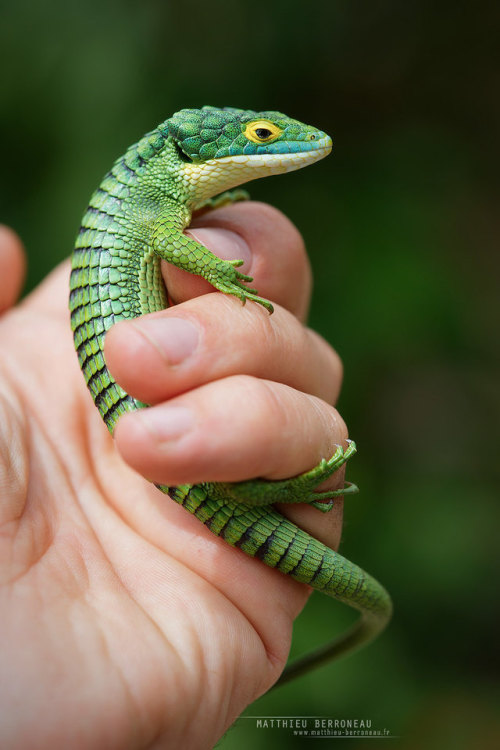
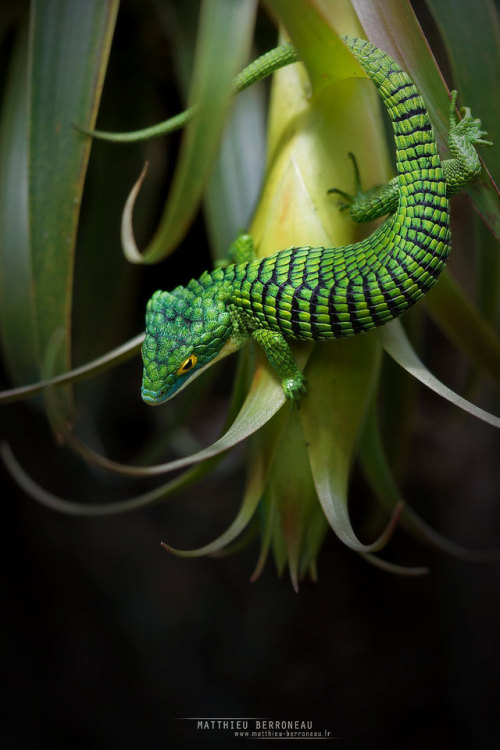
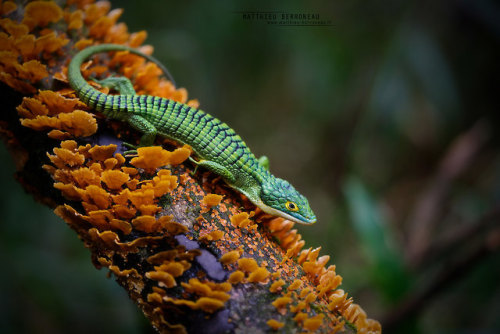
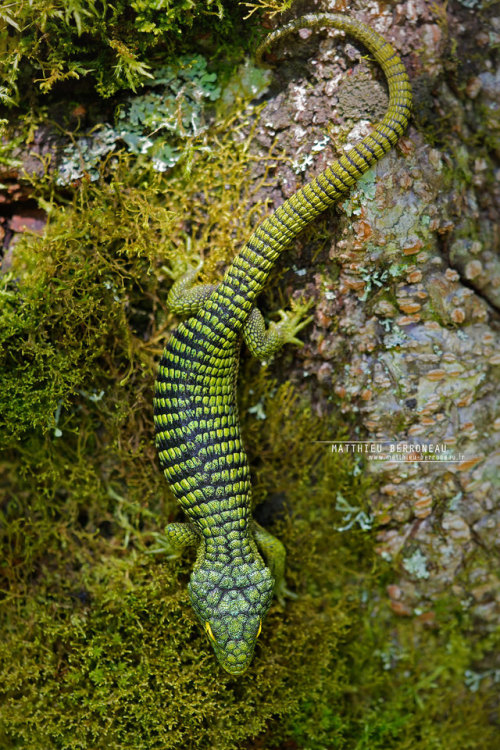
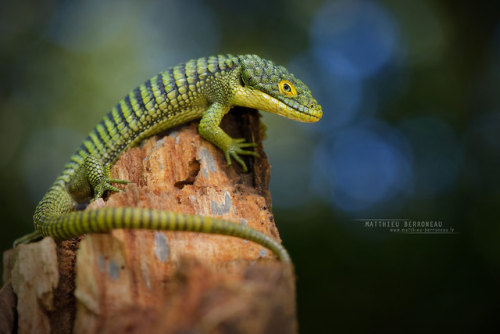
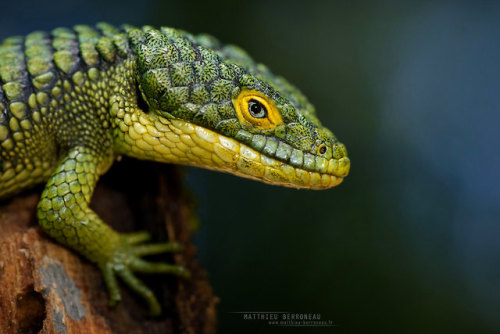
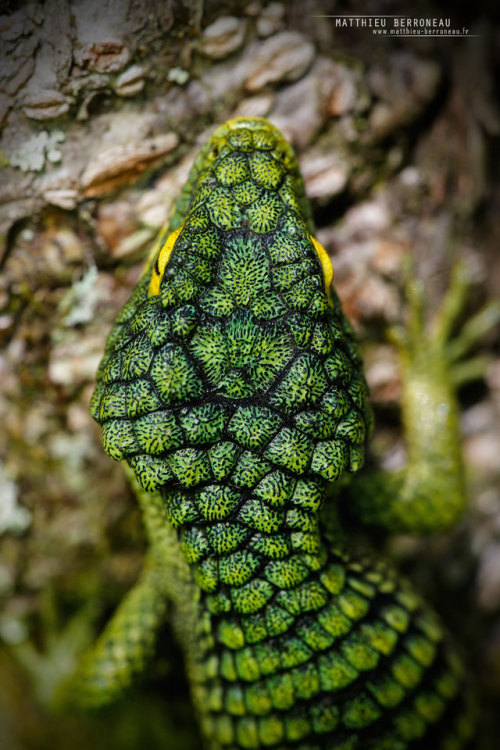
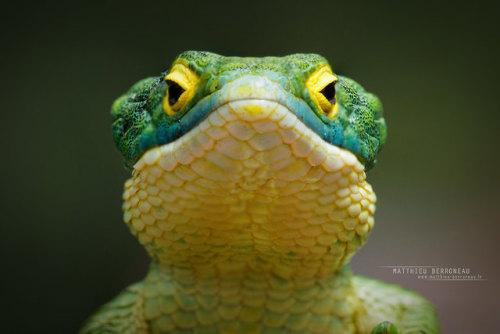
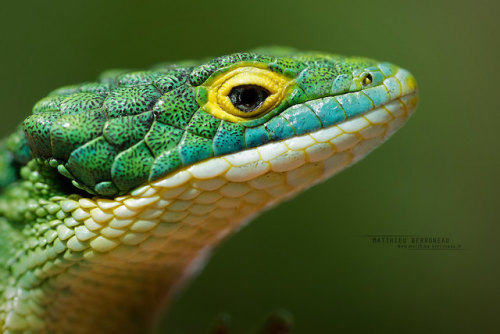
Arboreal or Mexican Alligator Lizard, Abronia graminea
Photos by Matthieu Berroneau on Flickr
This photographer on Instagram // Facebook
These photos have been posted with permission; do not remove credit or repost!
The Mexican alligator lizard is an endangered species of arboreal lizard native to the states of Veracruz and adjacent Puebla, Mexico. They grow to around 12 inches in length, are mainly insectivorous, and give birth to live young.
The species is threatened by illegal collection for the pet trade, deforestation, and degradation of habitat, largely through the conversion of land to agricultural use.
People talk a lot about how reading is necessary for writing, but when you really want to improve your writing, it’s important to go beyond just simple reading. Here are some things to do when reading:
Note how they begin and end the story. There are a ton of rather contradictory pieces of advice about starting stories, so see how they do it in the stories you enjoy. Don’t only look at the most popular stories, but look at your more obscure favorites.
See what strikes you. Is it fast or complicated scenes with a lot of emotions? Is it stark lines? Pithy dialogue? What do you remember the next day?
Pay attention to different styles. It’s not just whether they use past or present tense, first or third person. It’s whether the writing is more neutral or deeper inside character’s heads. Do they use italics? Parentheses? Other interesting stylistic choices? Take the ones you like and try them out in your own writing. See what works and what doesn’t.
Keep track of how they deal with other characters. Do we see a lot of secondary character each for very brief periods of time or are there a couple that show up a lot? How much information do we get about secondary characters? Do they have their own plots or do their plots revolve entirely around the main characters?
Count how many plots there are. Is there just one main plot or are there multiple subplots? Are the storylines mostly plot-based or character-based?
Pay attention to what you don’t like. If you don’t like what’s going on in a book or even just a scene, note what it is. Does the dialogue feel awkward? Are the characters inconsistent? Does the plot feel too convenient or cobbled together? Does the wording just feel off? See if you can spot those issues in your own writing, especially when reading a completed draft or beginning a later draft.
Writers, please, please, please, I am begging you
I know we don't vibe with Mary Sues, and I know we like watching characters fail...
But if your character is the world's best assassin, they shouldn't be botching nearly every single step of every single job just because the plot demands it. If your character is one of the greatest fighters to ever live, they can't badly lose every single fight the plot throws at them and then barely win the final confrontation. If your character is a competent military strategist, they need at least a few small successes during the course of the plot. If your character is an experienced leader, they can't be constantly making the kind of missteps that realistically would cause their subordinates to lose confidence in them.
If your character is good at something. Show them being good at it.
Neat!

Horror Movies Manipulate Brain Activity Expertly to Enhance Excitement
Finnish research team maps neural activity in response to watching horror movies. A study conducted by the University of Turku shows the top horror movies of the past 100 years, and how they manipulate brain activity. The findings were published in the journal Neuroimage.
Humans are fascinated by what scares us, be it sky-diving, roller-coasters, or true-crime documentaries – provided these threats are kept at a safe distance. Horror movies are no different.
Whilst all movies have our heroes face some kind of threat to their safety or happiness, horror movies up the ante by having some kind of superhuman or supernatural threat that cannot be reasoned with or fought easily.
The research team at the University of Turku, Finland, studied why we are drawn to such things as entertainment? The researchers first established the 100 best and scariest horror movies of the past century (Table 1), and how they made people feel.
Unseen Threats Are Most Scary
Firstly, 72% of people report watching at last one horror movie every 6 months, and the reasons for doing so, besides the feelings of fear and anxiety, was primarily that of excitement. Watching horror movies was also an excuse to socialise, with many people preferring to watch horror movies with others than on their own.
People found horror that was psychological in nature and based on real events the scariest, and were far more scared by things that were unseen or implied rather than what they could actually see.

Table 1. Top ten scariest movies of the past century.
– This latter distinction reflects two types of fear that people experience. The creeping foreboding dread that occurs when one feels that something isn’t quite right, and the instinctive response we have to the sudden appearance of a monster that make us jump out of our skin, says principal investigator, Professor Lauri Nummenmaa from Turku PET Centre.
MRI Reveals How Brain Reacts to Different Forms of Fear
Researchers wanted to know how the brain copes with fear in response to this complicated and ever changing environment. The group had people watch a horror movie whilst measuring neural activity in a magnetic resonance imaging scanner.
During those times when anxiety is slowly increasing, regions of the brain involved in visual and auditory perception become more active, as the need to attend for cues of threat in the environment become more important. After a sudden shock, brain activity is more evident in regions involved in emotion processing, threat evaluation, and decision making, enabling a rapid response.

(Image caption: Brain regions active during periods of impending dread (top row) and in response to sudden jump-scares (bottom))
However, these regions are in continuous talk-back with sensory regions throughout the movie, as if the sensory regions were preparing response networks as a scary event was becoming increasingly likely.
– Therefore, our brains are continuously anticipating and preparing us for action in response to threat, and horror movies exploit this expertly to enhance our excitement, explains Researcher Matthew Hudson.
#pretty sweet #snakes #gliding snakes #look at em go

The movie Snakes on a Plane had it wrong. That’s not how snakes fly.
Certain species of tree snakes can glide through the air, undulating their bodies as they soar from tree to tree. That wriggling isn’t an attempt to replicate how the reptiles slither across land or swim through water. The contortions are essential for stable gliding, mechanical engineer Isaac Yeaton and colleagues report June 29 in Nature Physics.
“They have evolved this ability to glide, and it’s pretty spectacular,” says Yeaton, of Johns Hopkins University Applied Physics Laboratory in Laurel, Md. Paradise tree snakes (Chrysopelea paradisi) fling themselves from branches, leaping distances of 10 meters or more (SN: 8/7/02). To record the snakes’ twists and turns, Yeaton, then at Virginia Tech in Blacksburg, and colleagues affixed reflective tape on the snakes’ backs and used high-speed cameras to capture the motion.
Physicists had previously discovered that the tree snakes flatten their bodies as they leap, generating lift (SN: 1/29/14). The new experiment reveals that the snakes also exert a complex combination of movements as they soar. Gliding snakes undulate their bodies both side to side and up and down, the researchers found, and move their tails above and below the level of their heads.
Scientists captured the undulating motion of paradise tree snakes as they glide through the sky. A computer simulation based on high-speed video shows that the undulation is necessary for stable flight.
Once the researchers had mapped out the snakes’ acrobatics, they created a computer simulation of gliding snakes. In the simulation, snakes that undulated flew similarly to the real-life snakes. But those that didn’t wriggle failed spectacularly, rotating to the side or falling head over tail, rather than maintaining a graceful, stable glide.
If confined to a single plane instead of wriggling in three dimensions, the snakes would tumble. So snakes on a plane won’t fly.
holy shit, this is fantastic! Great job, #paleostream!

Another sketch brought to you by #paleostream
Euthecodon, a giant relative of the dwarf crocodile, catching a flamingo mid air.

Totodile and Fuecoco help Quaxly.
Big-headed turtle Platysternon megacephalum (or big headed turtle) is a very odd-shaped turtle with a huge head and a long tail that are almost the same size as its body.
Prehistoric Planet Croc Ideas
So this was a thing I did on Twitter in anticipation of Prehistoric Planet. Obviously crocs (in this case meaning crocodylomorphs) were a pretty massive part of earth's fauna during the late Cretaceous, and seeing as the first season featured NONE I came to speculate which taxa could hypothetically make an appearance. Now part of the challenge for myself was to come up with a new, interesting contender every day in anticipation of the show's release, each based around the confirmed episides we had and restricted purely to taxa from the Campanian and Maastrichtian. While it took a lot of energy, I did manage to do so. Hell, halfway through they dropped the reveal of Simosuchus, which I had saved for later.

Obviously we didn't get much still, but I'll regardless post my list of candidates and ideas here, perhaps third time's the charme for a lot of these (tho for convenience I'm still ordering them by S2s episode titles). I'll also try to break them apart roughly by biome, starting with islands. PS: I'd love to hear which crocs people would have loved to see themselves. Any on this list or stuff I didn't even mention? Let me know I'm curious.





We got a shit ton of island crocs from the Cretaceous actually, which you can broadly divide into two categories. The crocodiles of the European archipelago as seen in the top row. Featuring the small, possibly shellfish eating Acynodon (art by Adramelech89), the incredibly widespread Allodaposuchus which did have some possibly semi-terrestrial forms (art by Alejandro Blanco, Aina and Agnès Amblás) and Aprosuchus, a tiny terrestrial critter from Hateg (art by @knuppitalism-with-ue). They already give a nice diversity between tiny durophages with blunt snouts, large, more traditional crocs and lanky land species.
The other island category concerns Madagascar, which had a lot of attention in season 2. Discounting Simosuchus, we got Araripesuchus tsangatsangana (art by Scott Hartman) and Mahajangasuchus (art by Mark Hallet). Both are really cool. The former is yet another smaller terrestrial species that may not actually be part of Araripesuchus, while the later is a massive, 4 meter relative of the famous Kaprosuchus that took to the water independently from all other crocs and has been nicknamed "Hippo croc" for its weird skull. Really I'd have loved to seen an episode entirely dedicated to this place.
Next up we had the badlands episode, which oh boy has a lot of contenders from the clade Notosuchia. Brace yourself.
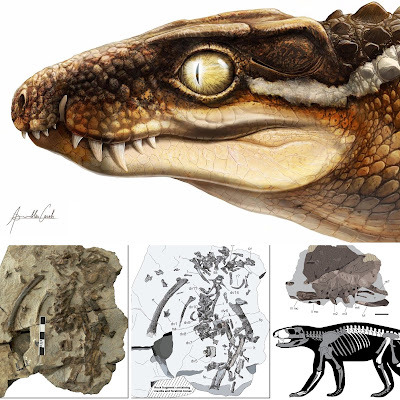







Here again I could split these in two categories. The first is just general badland taxa. There's Ogresuchus for example, from Spain's Tremp Formation (art by Aina and Agnès Amblás). A relatively small sebecid found in a sauropod nesting site. And we all know what PhP does with baby sauropods. Or the long-necked Gobiosuchus (art by @yoofilos) from Mongolia, which may look like its related to the other ones in this category but actually is a far more ancient type of croc.
The far bigger group concerns South America's Notosuchians. ALL OF THESE are from the Bauru Group, with some even from the same single formation. You got Stratiotosuchus (again by Joschua Knüppe), a large terrestrial baurusuchid that filled the nische of mid sized carnivore in an environment shared by sauropods and abelisaurs. There's Pissarrachampsa (by Felipe Alves Elias), another baurusuchid I decided to feature because we have evidence of a nesting site that shows they only had few eggs. A great opportunity to show their tender side. Uberabasuchus (justin_an74), part of the bizzarly proportioned peirosaurids. Adamantinasuchus (by Deverson da Silva), a small, lanky Notosuchian and of course the heavily armored omnivore Armadillosuchus (by the ever talented Júlia d'Oliveira). Hell you could do a full episode just on the foodweb of the Bauru Group (Godoy et al. 2014).
Then there's swamps, which I'll just use to dump all the crocs that don't fit into the other categories.



As you'd expect, freshwater would be ideal for crocs with a more traditional semi-aquatic lifestyle, here represented by three forms. Jiangxisuchus (image by Li et al. 2014) is a paralligatorid, which are tiny crocodilians from the Cretaceous and Paleogene of east Asia. We honestly don't know what they are, some say alligator relatives, others say they are closer to crocs. But its small and cute. Then there's Roxochampsa (artist of the model I couldn't find), which looks suspiciously crocodilian but is actually a relative of Uberabasuchus from the badlands, hell it appeared in the same formation. Still, I reasoned that I'd throw it into this category because I already proposed so much for badlands (none of which came true but hey). And then there's Denazinosuchus (art by Andrey Atuchin). Again it looks deceptively like a modern croc, but is actually the last remnant of the goniopholids, crocodyliforms that were prominent animals in the Jurassic and early Cretaceous. It could have brought both taxonomic diversity nad highlighted croc resilience till the end.



When it came to picking out crocs for Oceans, it got tricky. Obviously season 2 tried to differentiate itself by being set more in the open ocean, not the coast, and true pelagic crocodiles weren't around by the end of the Cretaceous. So I had to settle for coastal animals. There's Sabinosuchus (Schiller II et al. 2016), a cousin to Sarcosuchus and, like Denazinosuchus, one of the last of its lineage. Also its from Mexico which is rarely talked about for its fossils. Rhabdognathus (Ghedoghedo) is a distant cousin, a slender snouted dyrosaur. Unlike pholidosaurs, dyrosaurs actually did really well after the KPG impact and spread around a lot, living way into the Eocene. And finally Chenanisuchus (art by artbyjrc), which like Rhabdognathus was found both before and after the impact that killed the dinosaurs.


And the final two I shall talk about, both of which I thought/hoped would appear in the North America episode. Again, there's certainly overlap, both would have just as much fit into swamps, while many others would have also suited North America. Regardless, here's Brachychampsa (Tom Parker) and Borealosuchus (Chris Masna), both iconic animals from the Hell Creek Formation. One closely allied with alligators and caimans, the other more basal with a head-shape more similar to todays crocodiles.
Now obviously there'd have been a lot more. Part of the challenge to myself was to try and be as diverse as possible, rather than just listing 10 different baurusuchids I went with only two, tried to include as much of the world as possible, etc.... There's also the fact that some really awesome taxa, Titanochampsa, Brachiosuchus and Eurycephalosuchus, all incredibly unique or interesting, were published too late to have been considered for the show. And now, in hinsight, we obviously know that with the exception of Simosuchus none of them made it in. Which is a shame, but maybe next time.
To Write Better Antagonists, Have Them Embody the Protagonist's Struggles
(Spoilers for The Devil Wears Prada, Avatar the Last Airbender, Kung Fu Panda 2, and The Hunger Games triology).
Writing antagonists and villains can be hard, especially if you don't know how to do so.
I think a lot of writers' first impulse is to start off with a placeholder antagonist, only to find that this character ends up falling flat. They finish their story only for readers to find the antagonist is not scary or threatening at all.
Often the default reaction to this is to focus on making the antagonist meaner, badder, or scarier in whatever way they can- or alternatively they introduce a Tragic Backstory to make them seem broken and sympathetic. Often, this ends up having the exact opposite effect. Instead of a compelling and genuinely terrifying villain, the writer ends up with a Big Bad Edge Lord who the reader just straight up does not care about, or actively rolls their eyes at (I'm looking at you, Marvel).
What makes an antagonist or villain intimidating is not the sheer power they hold, but the personal or existential threat they pose to the protagonist. Meaning, their strength as a character comes from how they tie into the themes of the story.
To show what I mean, here's four examples of the thematic roles an antagonist can serve:
1. A Dark Reflection of the Protagonist
The Devil Wears Prada
Miranda Priestly is initially presented as a terrible boss- which she is- but as the movie goes on, we get to see her in a new light. We see her as an bonafide expert in her field, and a professional woman who is incredible at what she does. We even begin to see her personal struggles behind the scenes, where it’s clear her success has come at a huge personal cost. Her marriages fall apart, she spends ever waking moment working, and because she’s a woman in the corporate world, people are constantly trying to tear her down.
The climax of the movie, and the moment that leaves the viewer most disturbed, does not feature Miranda abusing Andy worse than ever before, but praising her. Specifically, she praises her by saying “I see a great deal of myself in you.” Here, we realize that, like Miranda, Andy has put her job and her career before everything else that she cares about, and has been slowly sacrificing everything about herself just to keep it. While Andy's actions are still a far cry from Miranda's sadistic and abusive managerial style, it's similar enough to recognize that if she continues down her path, she will likely end up turning into Miranda.
In the movie's resolution, Andy does not defeat Miranda by impressing her or proving her wrong (she already did that around the half way mark). Instead, she rejects the values and ideals that her toxic workplace has been forcing on her, and chooses to leave it all behind.
2. An Obstacle to the Protagonist's Ideals
Avatar: The Last Airbender
Fire Lord Ozai is a Big Bad Baddie without much depth or redemptive qualities. Normally this makes for a bad antagonist (and it's probably the reason Ozai has very little screen time compared to his children), but in Avatar: The Last Airbender, it works.
Why?
Because his very existence is a threat to Aang's values of nonviolence and forgiveness.
Fire Lord Ozai cannot be reasoned with. He plans to conquer and burn down the world, and for most of the story, it seems that the only way to stop him is to kill him, which goes against everything Aang stands for. Whether or not Aang could beat the Fire Lord was never really in question, at least for any adults watching the show. The real tension of the final season came from whether Aang could defeat the Fire Lord without sacrificing the ideals he inherited from the nomads; i.e. whether he could fulfill the role of the Avatar while remaining true to himself and his culture.
In the end, he manages to find a way: he defeats the Fire Lord not by killing him, but by stripping him of his powers.
3. A Symbol of the Protagonist's Inner Struggle
Kung Fu Panda 2
Kung Fu Panda 2 is about Po's quest for inner peace, and the villain, Lord Shen, symbolizes everything that's standing in his way.
Po and Lord Shen have very different stories that share one thing in common: they both cannot let go of the past. Lord Shen is obsessed with proving his parents wrong and getting vengeance by conquering all of China. Po is struggling to come to terms with the fact that he is adopted and is desperate to figure out who he is and why he ended up left in a box of radishes as a baby.
Lord Shen symbolizes Po's inner struggle in two main ways: one, he was the source of the tragedy that separated him from his parents, and two, he reinforces Po's negative assumptions about himself. When Po realizes that Lord Shen knows about his past and confronts him, Lord Shen immediately tells Po exactly what he's afraid of hearing: that his parents abandoned him because they didn't love him. Po and the Furious Five struggle to beat Shen not because he's powerful, but because Po can't let go of the past, and this causes him to repeatedly freeze up in battle, which Shen uses to his advantage.
Po overcomes Shen when he does the one thing Shen is incapable of: he lets go of the past and finds inner peace. Po comes to terms with his tragic past and recognizes that it does not define him, while Shen holds on to his obsession of defying his fate, which ultimately leads to his downfall.
4. A Representative of a Harsh Reality or a Bigger System
The Hunger Games
We don't really see President Snow do all that much on his own. Most of the direct conflict that Katniss faces, but with his underlings and the larger Capitol government. The few interactions we see between her and President Snow are mainly the two of them talking, and this is where we see the kind of threat he poses.
President Snow never lies to Katniss, not even once, and this is the true genius behind his character. He doesn't have to lie to or deceive Katniss, because the truth is enough to keep her complicit.
Katniss knows that fighting Snow and the Capital will lead to total war and destruction- the kind where there are survivors, but no winners. Snow tells her to imagine thousands upon thousands of her people dead, and that's exactly what happens. The entirety of District 12 gets bombed to ashes, Peeta gets brainwashed and turned into a human weapon, and her sister Prim, the very person she set out to protect at the beginning of the story, dies just before the Capitol's surrender. The districts won, but at a devastating cost.
Even after President Snow is captured and put up for execution, he continues to hurt Katniss by telling her the truth. He tells her that the bombs that killed her sister Prim were not sent by him, but by the people on her side. He brings to her attention that the rebellion she's been fighting for might just implement a regime just as oppressive and brutal as the one they overthrew and he's right.
In the end, Katniss is not the one to kill President Snow. She passes up her one chance to kill him to take down the new threat of President Coin.
-
 katysoarus liked this · 2 weeks ago
katysoarus liked this · 2 weeks ago -
 mlcly-bloo liked this · 3 weeks ago
mlcly-bloo liked this · 3 weeks ago -
 khajit-has-wares-but-not-that liked this · 1 month ago
khajit-has-wares-but-not-that liked this · 1 month ago -
 julieemarine liked this · 2 months ago
julieemarine liked this · 2 months ago -
 uvapan reblogged this · 2 months ago
uvapan reblogged this · 2 months ago -
 goldencamellia liked this · 3 months ago
goldencamellia liked this · 3 months ago -
 forbab reblogged this · 3 months ago
forbab reblogged this · 3 months ago -
 exuberantoctopus liked this · 3 months ago
exuberantoctopus liked this · 3 months ago -
 deedjre liked this · 3 months ago
deedjre liked this · 3 months ago -
 thadeeliv reblogged this · 3 months ago
thadeeliv reblogged this · 3 months ago -
 thadeeliv liked this · 3 months ago
thadeeliv liked this · 3 months ago -
 voidspace-bubble reblogged this · 3 months ago
voidspace-bubble reblogged this · 3 months ago -
 augustino-d-0ssoffo reblogged this · 3 months ago
augustino-d-0ssoffo reblogged this · 3 months ago -
 wwinnnryy-rockbelll liked this · 3 months ago
wwinnnryy-rockbelll liked this · 3 months ago -
 i-is-a-pancake liked this · 4 months ago
i-is-a-pancake liked this · 4 months ago -
 sothensparklesays liked this · 5 months ago
sothensparklesays liked this · 5 months ago -
 mothman-stan liked this · 5 months ago
mothman-stan liked this · 5 months ago -
 canada-doesnt-care reblogged this · 5 months ago
canada-doesnt-care reblogged this · 5 months ago -
 nimbus-cloud reblogged this · 5 months ago
nimbus-cloud reblogged this · 5 months ago -
 kitty-mancer liked this · 5 months ago
kitty-mancer liked this · 5 months ago -
 lessproblematical reblogged this · 5 months ago
lessproblematical reblogged this · 5 months ago -
 magpiesandgremlins liked this · 6 months ago
magpiesandgremlins liked this · 6 months ago -
 caleb3131 liked this · 6 months ago
caleb3131 liked this · 6 months ago -
 mlq1516 reblogged this · 6 months ago
mlq1516 reblogged this · 6 months ago -
 kyroengrimiz liked this · 6 months ago
kyroengrimiz liked this · 6 months ago -
 tookaperegrin reblogged this · 7 months ago
tookaperegrin reblogged this · 7 months ago -
 blurry-gay-cryptid reblogged this · 7 months ago
blurry-gay-cryptid reblogged this · 7 months ago -
 xenomorphic-warrior liked this · 7 months ago
xenomorphic-warrior liked this · 7 months ago -
 virdigrishammer reblogged this · 7 months ago
virdigrishammer reblogged this · 7 months ago -
 prisonerofthemoment reblogged this · 7 months ago
prisonerofthemoment reblogged this · 7 months ago -
 chickletgirl reblogged this · 7 months ago
chickletgirl reblogged this · 7 months ago -
 mindyfromohio reblogged this · 7 months ago
mindyfromohio reblogged this · 7 months ago -
 wynternightfox reblogged this · 7 months ago
wynternightfox reblogged this · 7 months ago -
 purplesupersiren liked this · 7 months ago
purplesupersiren liked this · 7 months ago -
 gerbildine liked this · 7 months ago
gerbildine liked this · 7 months ago -
 veelafyre reblogged this · 7 months ago
veelafyre reblogged this · 7 months ago -
 veelafyre liked this · 7 months ago
veelafyre liked this · 7 months ago -
 kaleidodreams reblogged this · 7 months ago
kaleidodreams reblogged this · 7 months ago -
 queencaitlin135 reblogged this · 7 months ago
queencaitlin135 reblogged this · 7 months ago -
 slashscowboyboots reblogged this · 7 months ago
slashscowboyboots reblogged this · 7 months ago -
 planetlessmoon reblogged this · 7 months ago
planetlessmoon reblogged this · 7 months ago -
 planetlessmoon liked this · 7 months ago
planetlessmoon liked this · 7 months ago -
 cirnoz420 liked this · 7 months ago
cirnoz420 liked this · 7 months ago -
 cursed--alien reblogged this · 7 months ago
cursed--alien reblogged this · 7 months ago -
 jamalexlee reblogged this · 7 months ago
jamalexlee reblogged this · 7 months ago -
 seasonalzz reblogged this · 7 months ago
seasonalzz reblogged this · 7 months ago

A Cozy Cabana for Crocodiles, Alligators and their ancestors. -fan of the webcomic Paranatural, Pokemon, Hideo Kojima titles -updates/posts infrequently
237 posts